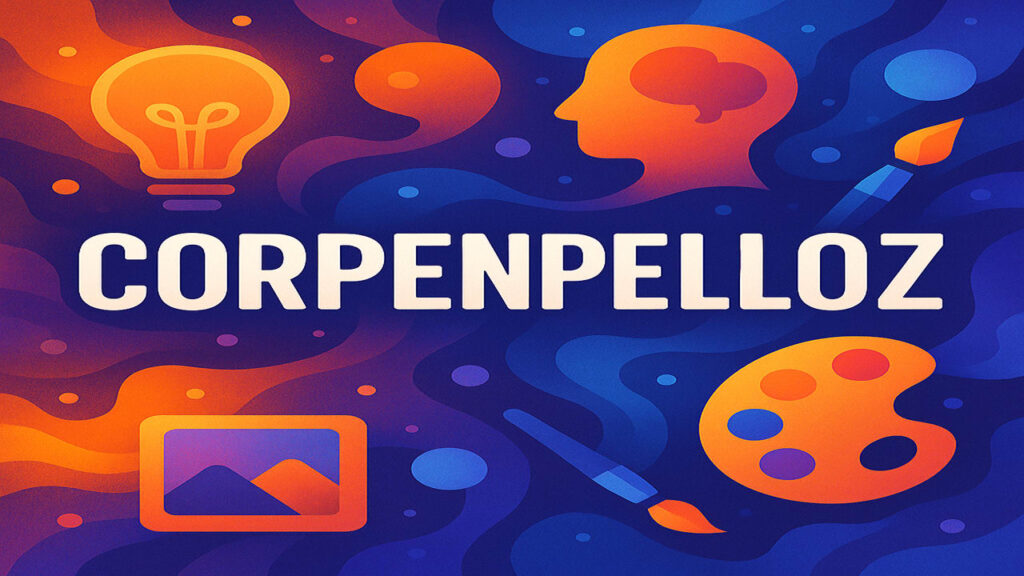In the swirling tides of digital culture, every now and then, a word emerges that captures imagination without clear definition. Corpenpelloz is one such term. It started as a quiet murmur in niche online communities, slipped into creative forums, popped up in digital art, and even found a home in alternative fashion. Despite its enigmatic origin, Corpenpelloz has begun to take shape—not as a brand or trend in the conventional sense, but as a feeling, a style, and a subtle rebellion against over-defined modern identities.
Origins in Obscurity: Tracing the First Mentions
Like many cultural phenomena born on the internet, Corpenpelloz lacks a single point of origin. The earliest known mentions come from obscure message boards and Tumblr-style blogs around 2019. It was used as a tag for art that couldn’t be neatly categorized—moody illustrations, glitchy videos, fashion experiments with no obvious inspiration.
Some speculated that Corpenpelloz was a typo, others assumed it was a secret code among digital artists. Yet, its repetition gave it power. Like many viral words—think “vibe,” “core,” or “aesthetic”—Corpenpelloz began to mean something simply because people wanted it to mean something.
Aesthetic Without Borders
If you search #Corpenpelloz today on social platforms, you’ll find a mix of content that seems, at first glance, unrelated. A surreal photo of a decaying hallway. A poem typed on a mechanical typewriter. A short film with no dialogue, only ambient sound. A dress made of recycled metal wire.
These creations don’t conform to traditional aesthetic labels like “cottagecore,” “cyberpunk,” or “minimalism.” Instead, they evoke emotion without explanation. Corpenpelloz stands as an aesthetic without rigid boundaries—a deliberate defiance of over-tagged content and algorithm-driven visibility.
The Philosophy Behind the Word
More than just a style, Corpenpelloz represents a mindset. In a world flooded with content, where everyone is a brand and every post is crafted for engagement, Corpenpelloz suggests a quieter path: make art that doesn’t seek approval. Wear outfits not for clicks but for expression. Share thoughts not to gain followers but to simply exist.
It aligns loosely with the “post-aesthetic” or “anti-algorithm” mindset that many Gen Z creators are embracing. By not chasing trends or SEO strategies, Corpenpelloz creators aim for authenticity—whatever that means to them.
Corpenpelloz in Fashion and Art
Some underground designers have begun using the term Corpenpelloz to describe their work. These aren’t pieces you’d find in mainstream fashion outlets. Think: deconstructed silhouettes, garments made from unconventional materials, and designs that blur the line between wearable and sculptural.
In art, Corpenpelloz is associated with digital imperfection. Glitch art, analog textures, overlapping audio, and broken visual loops are all part of this style. Artists embrace the flaws, showing that creation is messy, non-linear, and deeply personal.
A Quiet Counterculture
The digital world increasingly pushes creators toward visibility. Trending sounds. Influencer aesthetics. Daily uploads. Virality. In contrast, Corpenpelloz is rooted in invisibility. Its followers don’t clamor for attention—they whisper, observe, and express in spaces that feel safe, small, and sacred.
In this way, Corpenpelloz is a soft counterculture. It’s not protesting loudly like punk once did; instead, it resists by retreating. It builds meaning through subtlety. It exists in quiet places, often intentionally hard to find.
Corpenpelloz as a Personal Journey
Ask ten people what Corpenpelloz means, and you’ll get ten answers. That’s the point. For some, it’s a creative refuge; for others, it’s a code word for rejecting perfection. It might be a type of journaling, a personal art form, a playlist, or even a mindset toward daily life.
This ambiguity is what makes Corpenpelloz powerful. It doesn’t try to define you; it invites you to define it through your experience. It encourages exploration, not identity. In that sense, it’s more journey than destination.
Why It Resonates Today
The rise of Corpenpelloz reflects a growing fatigue with hyper-visibility and commercial creativity. We are constantly asked to package our lives for an audience, to perform, to polish. Corpenpelloz says: what if you didn’t?
It’s an idea that resonates in 2025’s digital climate, where creators are burning out and audiences are craving sincerity. As mental health takes center stage and the toxicity of comparison becomes more evident, movements like Corpenpelloz offer something different—something slower, softer, and more honest.
Is Corpenpelloz the Future or a Phase?
Whether Corpenpelloz will evolve into a mainstream trend or fade into digital mythology is uncertain. Some compare it to aesthetic movements that eventually became over-commercialized. Others argue that its very nature resists commodification.
Perhaps Corpenpelloz isn’t meant to last forever. Maybe it’s just a temporary sanctuary for those who need it now. Like a forgotten room in a busy city, it may not stay hidden, but its impact on those who found it will remain.
Conclusion: Naming the Unnameable
In trying to define Corpenpelloz, we risk doing the very thing it resists—boxing it in. But maybe that’s okay. Maybe part of the magic lies in attempting to describe it, knowing we’ll never quite succeed.
Corpenpelloz is the art of not knowing. The beauty of not being certain. The freedom of creating without needing a label. And in today’s world, that might be the most radical act of all.


